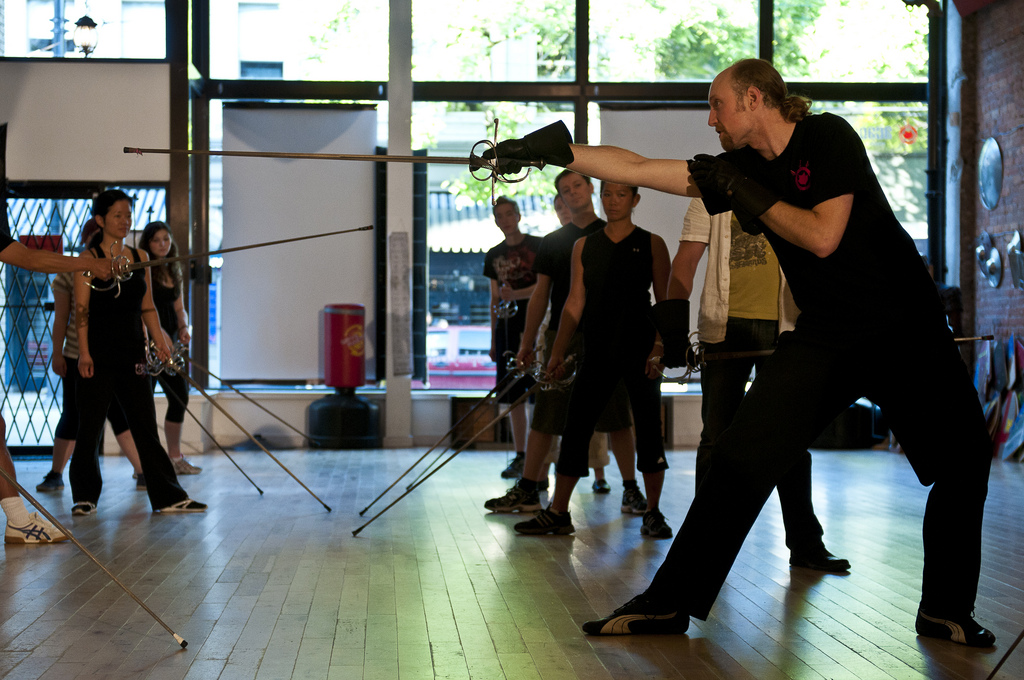Objective measures can be compelling. They’re easy to inspect and they can allow you to see progress in a way you can graph. However, often people choose the wrong goals to measure and this has a detrimental effect on their development.
For example, when a student gets focused on winning or “getting hits”, a few negative outcomes typically occur:
-
They seek out inferior training partners so that they can up their chances of winning.
Thus they are not challenged and progress slower than others.
-
They develop a random or chaotic approach that can score points but becomes a barrier to the development of techniques that work against good opponents.
It also limits their consistency as chaos is an unreliable martial strategy.
-
They focus on a single technique or approach that is effective against their current opponents right now, to the exclusion of all else.
This prevents them from having the full strategic pallet necessary for defeating a more sophisticated opponent, or developing new approaches when their opponents figure out their current “trick”. It can also limit their overall expression and enjoyment of the art.
I don’t want to throw out measurable goals. For many they can be very useful (though they are not necessarily required). However, a good training plan has measures that are relevant to each stage of your learning. Specific recognizable objectives that help you build a solid foundation, aim at long-term excellence, and enjoy yourself along the way. Here are some ideas you can use in individual training sessions to help reframe your objectives.
For General Training
-
Measure and reward your training consistency instead of your technical success.
Set a daily or weekly training goal for yourself, then cut it in half (we all have a tendency to be overly ambitious, especially at the beginning), and celebrate every time you hit it.
-
Understand the technical progression of your art and then assess your proficiency in those techniques.
If you’re part of a formal school, they should be able to give you a clear picture of what techniques they feel are best to become proficient in first. If you are not, seek out expert advice to build such a picture for yourself.
-
Set a training courage goal.
Make a goal to step outside of your training comfort zone once per week. Whether that means learning a new technique, engaging with an intimidatingly advanced partner, or attempting a technical or athletic feat. It is simply the attempt that you reward.
-
Set effort based goals as opposed to success based goals.
Reward yourself for trying something, for working at something, versus achieving it.
For Sparring
-
Holding your ground.
Make your combative objective to keep control of your opponent’s weapon for as long as possible, to stand as close to the opponent for as long as possible, or to receive and defend against as many blows as possible — while completely avoiding striking your partner. You can set a time objective or simply keep track of your best time.
-
Attempting a particular technique.
After tactical exercise, you need to integrate techniques into combat. A fantastic way to practice this is to set a technique practice objective. Decide that you are going to attempt a particular technique at least 10 times in a particular series of bouts. The victory criterion is simply the attempt at the technique.
One of my students has always exemplified this superbly. At the end of a series of passes, regardless of how many “hits” he scored, I often hear him say: “I accomplished what I wanted to accomplish.” He goes in with personal objectives and keeps his focus on those above what might be measured externally.
-
Being Objectively Daring.
Along the lines of setting a measurable technique-based objective, challenging yourself psychologically can be highly valuable. Challenge yourself to fence with a certain number of opponents with intimidating levels of knowledge, or set a technique goal that is specifically out of your comfort zone. Perhaps try a set of passes where you are always defensive if you are generally an offensive fighter, or vice versa. When doing this, try setting an objective for a number of attacks you mean to perform, or set a goal for a number of times you want to lose in your bouts, and make it a big number.
Remember that though objectives may be externally measurable, their value to you is internally set. Harness them to best reflect your personal training goals and your own enjoyment.
